Taoist Funeral Rituals in Singapore – Symbols, Customs, and Meanings
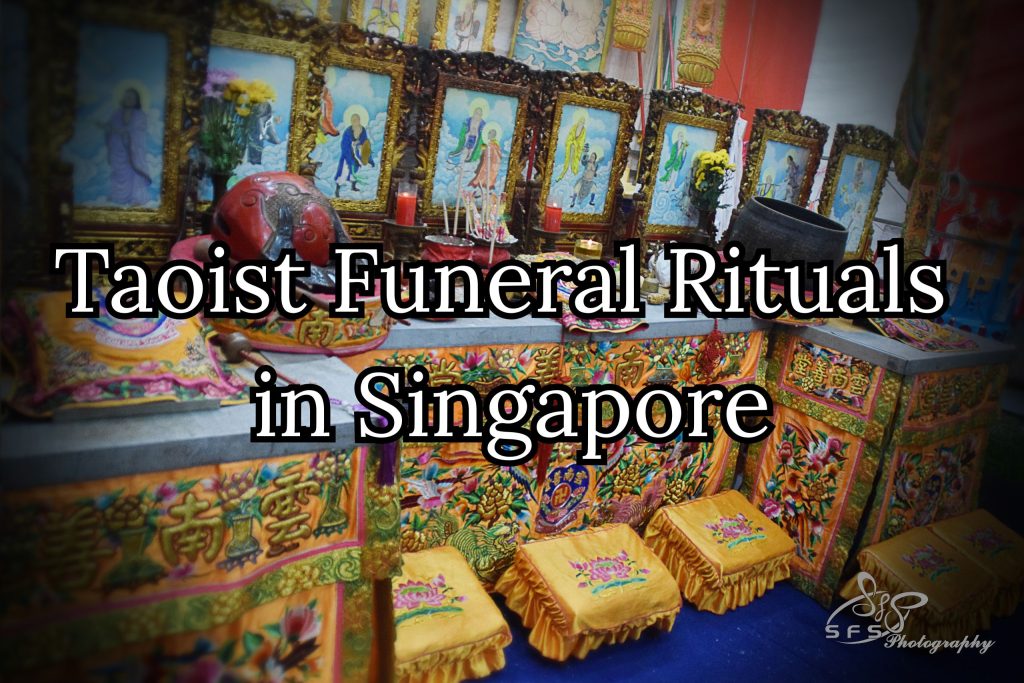
Taoist funerals in Singapore are deeply rooted in centuries-old Chinese traditions, blending Taoist cosmology with local folk beliefs and community practices. While modern life and urbanisation have simplified some customs, many families still retain rituals that express filial piety, guide the spirit of the deceased, and maintain continuity between the living and the dead.
This blog explores some of the most distinctive Taoist funeral rituals and items you might encounter in Singapore — from paper houses to breaking the Hell’s Gate, and from soul-summoning to the striking big-headed dolls that appear at funeral processions.
Breaking the Hell’s Gate (破地獄門 Pò Dìyù Mén)
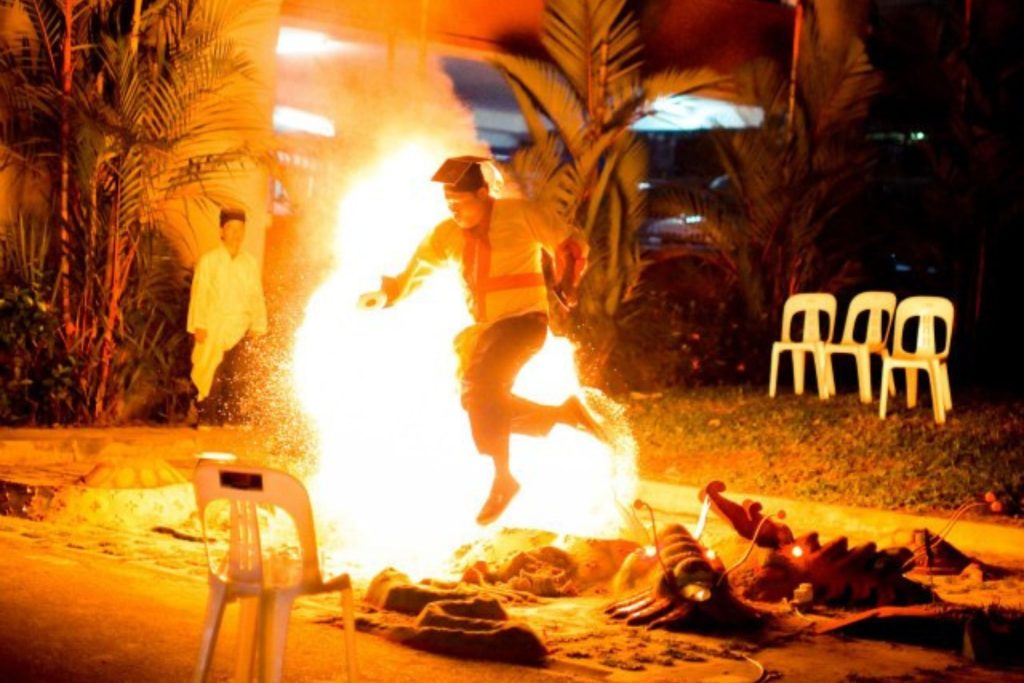
One of the most dramatic rituals in a Taoist funeral is “breaking the Hell’s Gate”. In this ceremony, Taoist priests construct a symbolic “gate” representing the obstacles in the underworld. Chanting scriptures, they circle the gate before breaking it open with ritual tools.
In some older versions, priests leapt over flames or poured water into boiling oil to symbolically “fight through hell” — though these physical displays are less common in Singapore today, where funerals are often held in void decks or funeral parlours.
The ritual helps the soul escape punishments in the underworld and find a smoother journey toward rebirth or heavenly realms. It is particularly meaningful for those who died suddenly or under tragic circumstances, as families worry their spirits may be trapped.
Paper Houses and Zhizha (紙紮 Zhǐzhā)
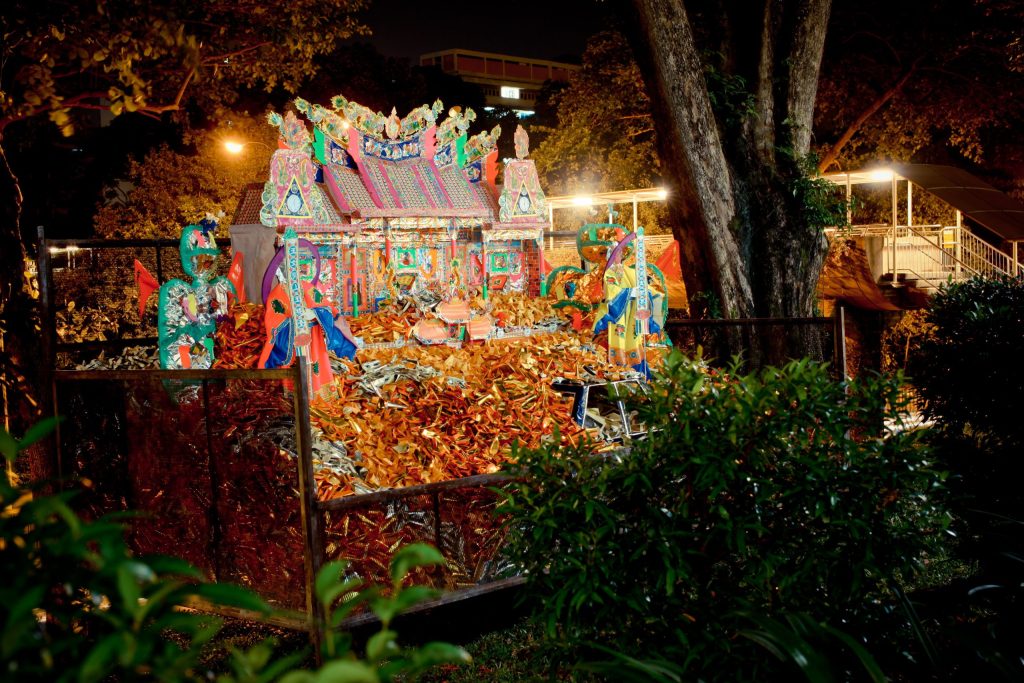
At many Taoist funerals in Singapore, you’ll see large, colourful paper structures — houses, cars, servants, or even iPhones and credit cards — displayed at the wake. These are called zhizha.
On the final day, they are burned in a metal furnace near the funeral site, so that the deceased can “receive” these items in the afterlife. Families may order elaborate paper mansions or luxury cars, reflecting the modern consumer world.
The offerings show filial piety and love, ensuring the departed continues to enjoy comfort and status in the other world.
Joss Paper and Hell Bank Notes (紙錢 Zhǐqián)
Alongside zhizha, families burn stacks of joss paper, including Hell Bank Notes — spirit money printed with fantastical denominations. The belief is that money helps the deceased settle debts and live comfortably in the underworld.
In Singapore, you often see families burning joss paper at designated bins provided by town councils, especially during Ghost Month and funerals.
Big-Headed Dolls (大頭娃娃 Dàtóu Wáwá)
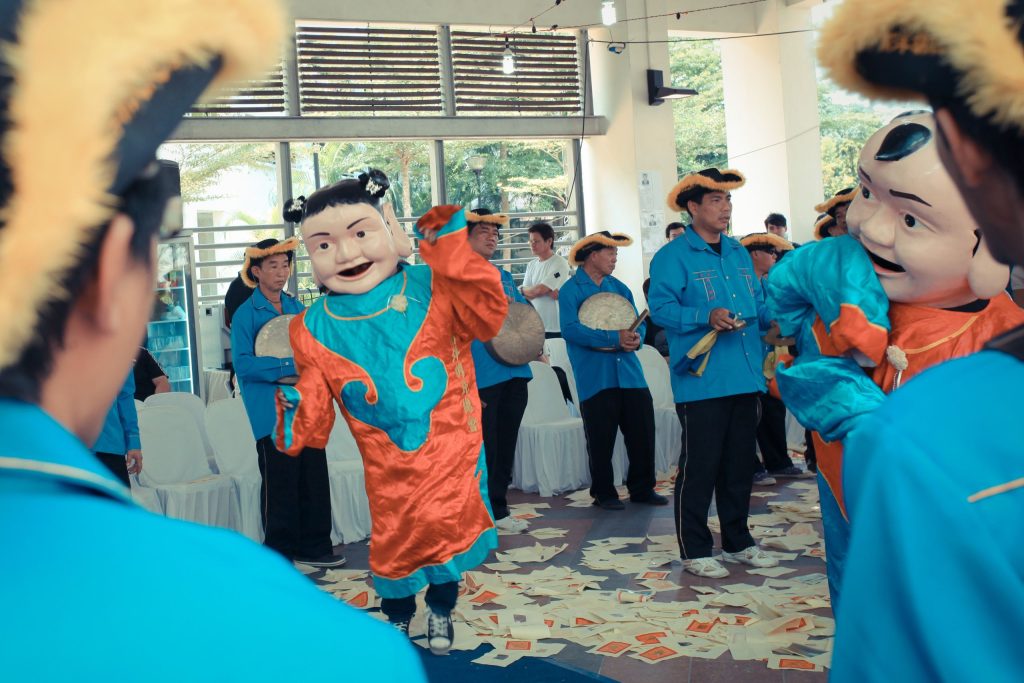
A uniquely eye-catching element in some Singapore Taoist funerals is the appearance of big-headed doll performers. These papier-mâché or mask-like figures with exaggerated faces are worn by performers who lead processions, dance, or interact with mourners.
They can be joyful or solemn, depending on the stage of the funeral. While their exact origin is uncertain, they serve both as entertainment and as spiritual guardians who ward off evil and guide the deceased’s spirit. Interestingly, in Singapore’s multicultural setting, even non-Chinese performers (e.g., Malay Muslims) are sometimes hired to play these roles.
Spirit Tablet (靈位 Língwèi)
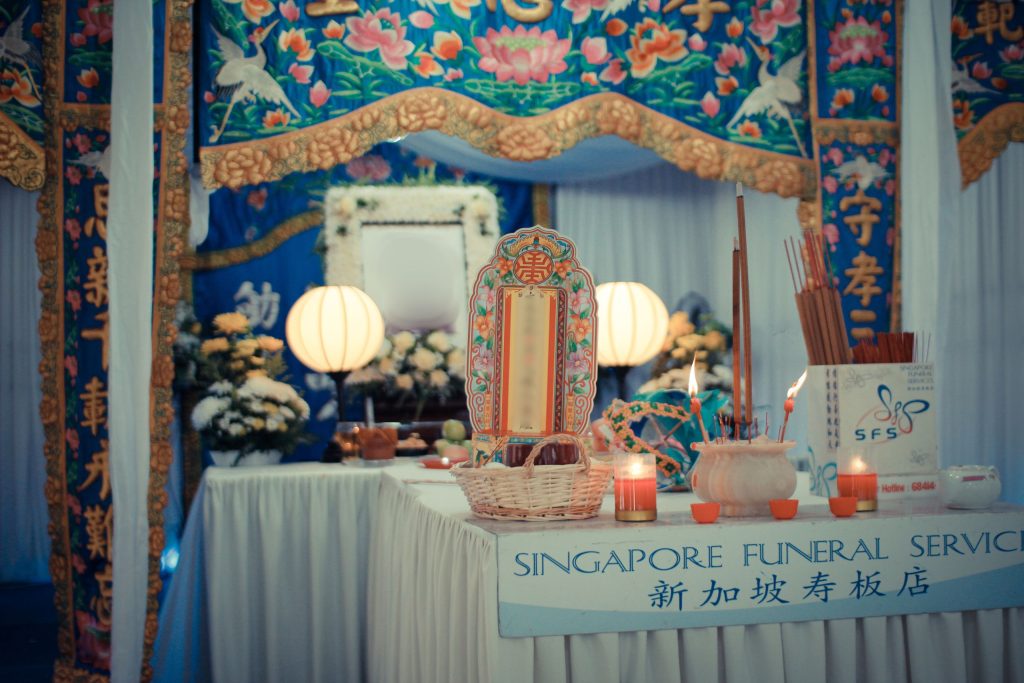
At the centre of the altar is the spirit tablet, inscribed with the deceased’s name. Offerings, incense, and bows are directed to this tablet, which serves as the “seat” of the soul during the wake.
In Singapore, the spirit tablet may later be moved to an ancestral altar at home or a columbarium niche, where families continue to offer prayers during festivals like Qing Ming.
Incense, Candles, and Food Offerings
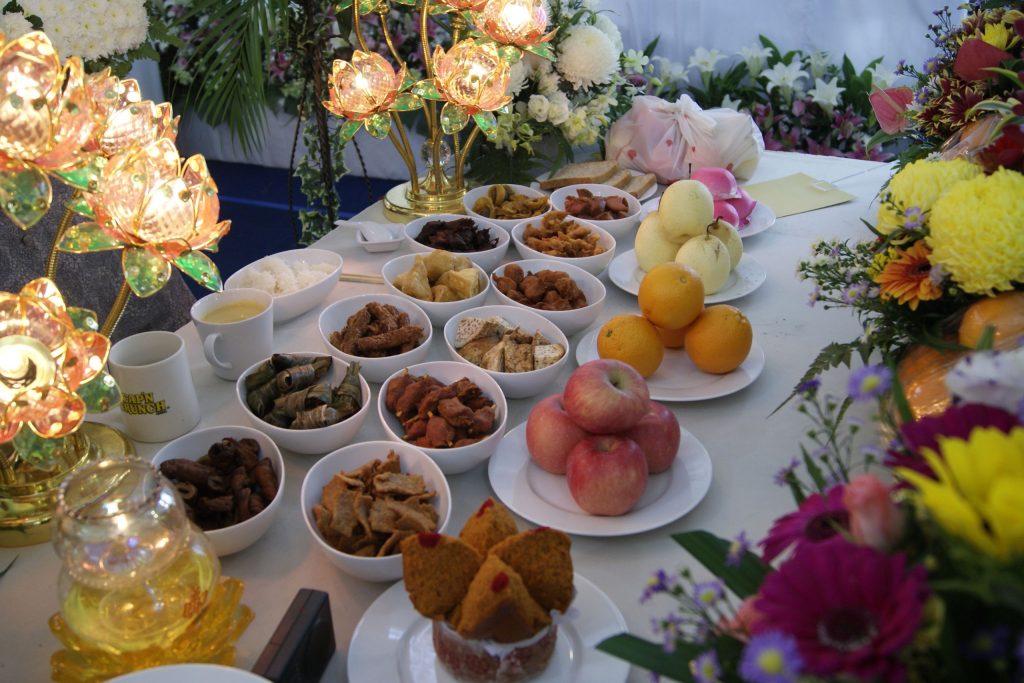
Incense burning is constant throughout the funeral period. Rising smoke is seen as a medium that carries prayers to the heavens and nourishes the spirit. Families also place food, fruits, tea, and sometimes wine on the altar.
At the end of the wake, this food is shared among family members or given away, symbolising blessings passed on from the deceased.
Summoning the Soul (召魂 Zhàohún / 迎靈 Yínglíng)
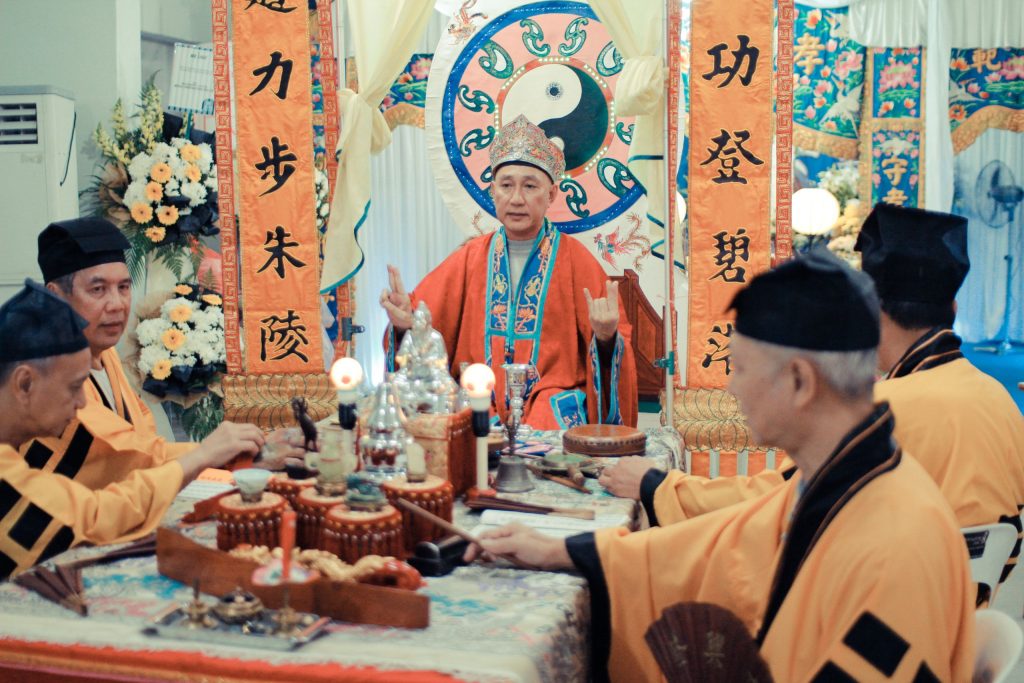
At the start of the wake, priests may perform a soul-calling ritual, inviting the spirit of the deceased to “return” to the altar. This ensures the offerings and prayers are received.
The Funeral Procession (送靈 Sònglíng / 出殯 Chūbìn)
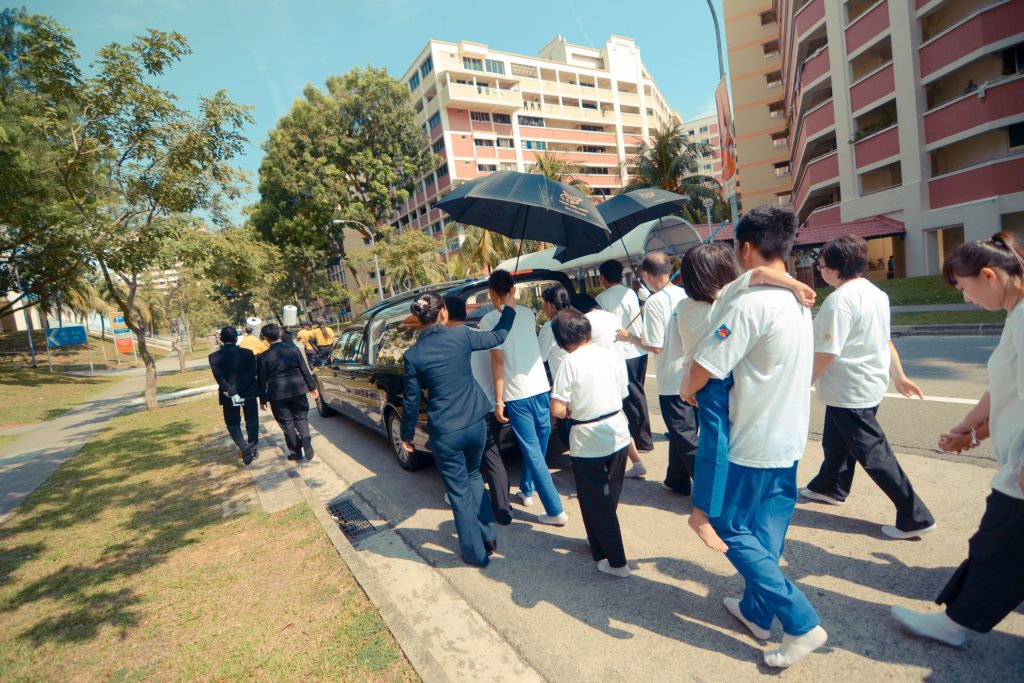
On the day of the funeral, the coffin is taken to the crematorium or cemetery in a procession. Traditionally, this might have included bands, banners, and firecrackers. In modern Singapore, it is more subdued, but you may still see musicians or big-headed dolls accompanying the hearse.
It is commonly believed that on the seventh day after death, the soul of the deceased returns home. Families in Singapore may prepare food, light incense, and keep vigil. Some even recount sensing their loved one’s presence.
Forty-Nine Days of Mourning (七七四十九)
Taoist and Buddhist beliefs hold that the soul undergoes judgment cycles over 49 days. Families may hold weekly memorial prayers during this period. In Singapore, this is often simplified to prayers on the 7th, 21st, and 49th days.
It is commonly believed that on the seventh day after death(頭七 Tóu Qī), the soul of the deceased returns home. Families in Singapore may prepare food, light incense, and keep vigil. Some even recount sensing their loved one’s presence.
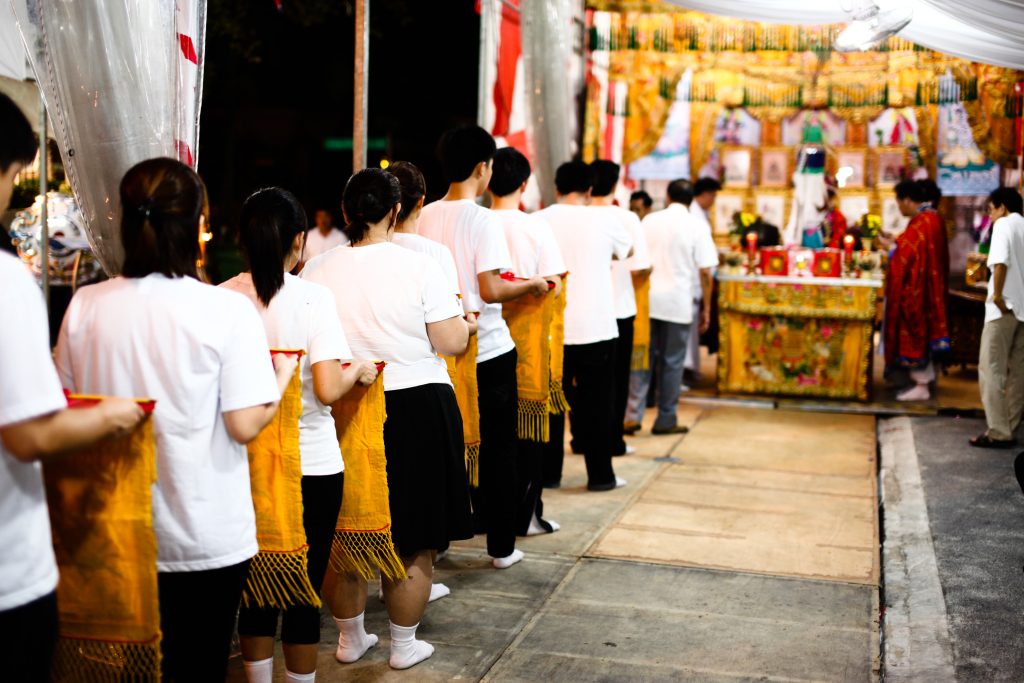
Taoist funeral rituals in Singapore are a tapestry of rich symbolism: guiding the soul, honouring ancestors, and expressing love across the boundary of life and death. From the dramatic breaking of Hell’s Gate to the humble burning of incense, each practice reflects both cosmological belief and filial devotion.
While some customs are fading or being adapted for modern urban life, many remain deeply meaningful for families. They are not just rituals for the dead, but also reminders to the living of duty, connection, and the enduring bonds of kinship.
